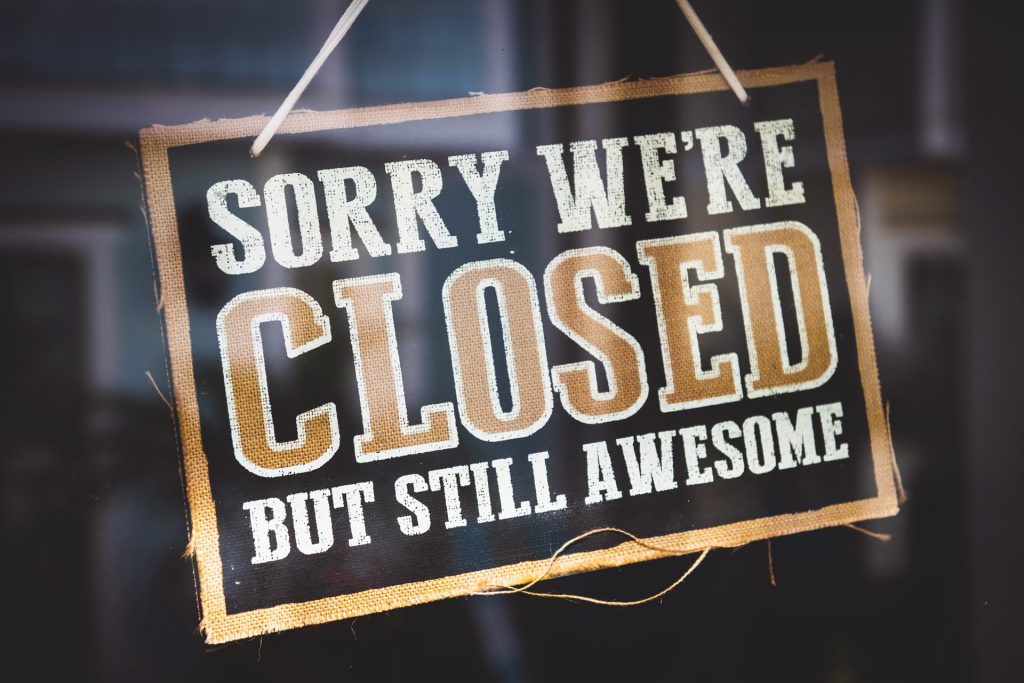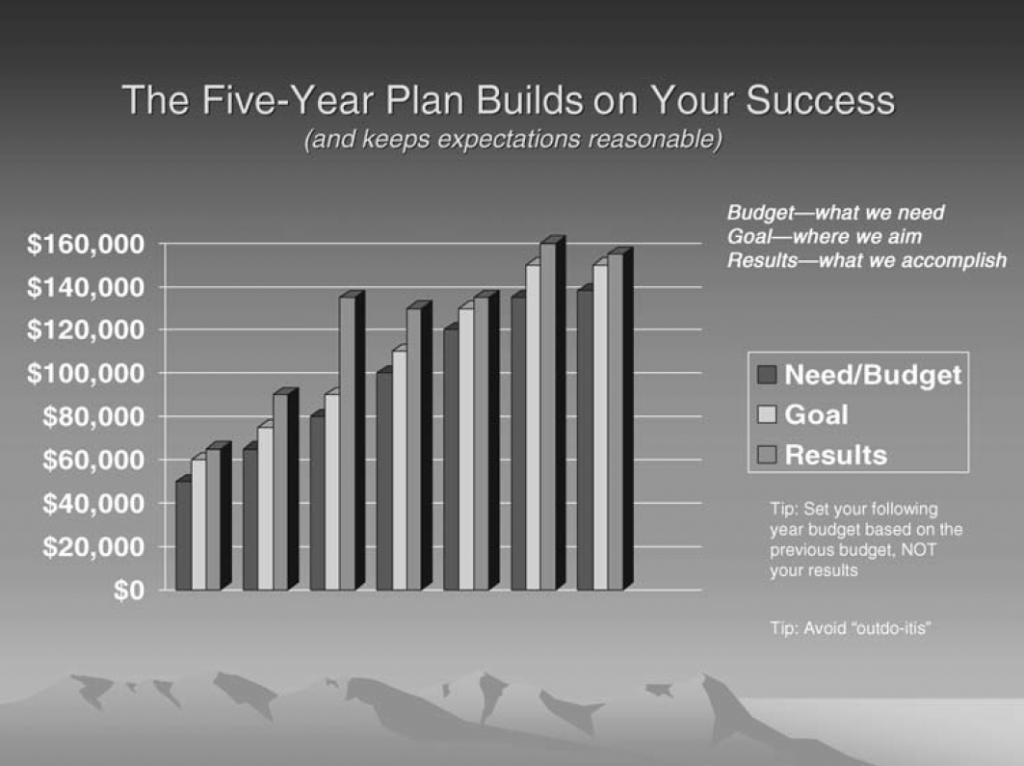As a volunteer organizing an auction, you may think to yourself, “I am not going to be working on the auction next year. I only signed up for one year!”
That may be true, but someone is going to be working on the auction, and one of the best gifts you can give your organization is to break the cycle of one-year planning.
The Perils of “Perpetual Start-up” Mode
The cycle of one-year planning keeps the auction as a perpetual start-up business.
Auction chairs approach their “tour of duty” as something they must get through, instead of an opportunity to build something new, different and lasting. They see their mission as needing to throw a great party, and then hope that it makes money.
While this approach may result in some success, it will never yield maximum results.
True success comes from realizing your auction is a business (when you end up with more money than you started with, you have a business). How successful a business is or can be depends directly on how well organized that business is from the start.
Don’t Plan to Go Out-of-Business

Many charity auctions are started as businesses that plan to go out of business the day after their first sale! Of course, any other “business” would never succeed long term with this kind of attitude.
Imagine a business that sold Christmas decorations that planned to go out of business on December 26, only to wait until June to decide to become a start-up company once again selling Christmas decorations!
Now is your chance to break this pattern and leave a real legacy for your organization.
Solution: The Auction Steering Committee
The best way to eliminate the constant starting and stopping of the business is to do away with the concept of the traditional auction committee and replace it with a steering committee.

Auction Committees vs. Auction Steering Committees
What’s the difference? An auction committee has the event as its focus – getting through the auction and then being done. In contrast, a steering committee guides the business of fundraising, which includes the event. It never really goes out of business.
Unlike the auction committee, a steering committee doesn’t have a termination date.
This is not to suggest that once you are on the steering committee you can never leave, but rather that the steering committee operates on continuum, with a line of succession, very much like a company’s Board of Directors. Some members serve on the committee for three years, some for two, and some for one year.
Who Leads the Auction Steering Committee?
Leadership comes from within the committee, so the chair does not walk into the position untested and has at least a year of observing the committee’s operations.
This is a much more orderly approach that will reduce the stress and strain on those serving, and it eliminates the need to beg people to take on the awesome responsibility of being the auction chair with little or no prior experience.
The steering committee still consists of all the essential elements needed to manage the event, but they manage it as an ongoing business, not just a discrete event.
Lines of succession within the committee are clear and established, and recruiting to replace those that are in their final year is simpler because the new recruits get at least a year to learn “on the job” before taking on direct responsibility.
Roles for Your Auction Steering Committee
Every committee’s needs are different; however, you should consider staffing these roles at a minimum for your big gala.
| Chair | Responsibilities |
|---|---|
| Managing Director | -Coordinate various chairs to design and execute an integrated fundraising strategy. |
| Procurement | -Gather items for sale at the auction |
| Audience Development | -Design and distribute invitations -Coordinate sales of corporate tables -Track reservations |
| Operations | -Coordinate the venue, decorations, food service, and Audio/Visual |
| Publications | -Design and publish auction catalog -Manage database entry into event software |
| Publicity | -Engage local media and community about event -Register event on community calendars |
| Financials | -Manage budgeting across committees -Accept and deposit all money from before, during and after event |
| Display | -Set up live and silent auction displays -Design live auction preview |
| Volunteers | -Recruit, coordinate and train volunteers |
| Logistics | -Track and store auction items -Organize pickup and delivery of any larger auction items |
| Cleanup | -Ensure venue is in the same shape, or better, as prior to the event -Check for personal belongings left at event |
| Thank You Notes | -Thank everyone who attended or donated items |
| Odds and Ends | -Manage miscellaneous tasks that don't fall to a committee -Augment staff of committees needing resources |
The Importance of Five-Year Planning
Now that your Auction Steering Committee is in place, it’s time to work on your five-year plan.
Which Message Resonates Better?
Assume at some point you and your committee are going to ask corporate donors to be sponsors, underwriters, or matching-gift or item donors. What message will resonate with those making a decision to assist you and your cause?
- ‘‘Our school is having a fundraiser this year to raise money for quality education in our community. We would really like to have your company on our team helping us. Would you consider assisting us as a sponsor?”
- ‘‘Our school is on the path to raise $XXXover a Five-Year Plan to support quality education in our community. We would really like to have your company on board as a partner in achieving this five-year goal. Would you consider joining our team to support education in our community as a sustaining sponsor?”
Let’s look at one more example:
- ‘‘Our school is having a fundraiser this year, and we need a sound system for our event. Can you provide a quote for us based on the provided specification?’’
- ‘‘Our school is on track to raise $XXX over a Five-Year Plan, and we are selecting vendors that want to have a steady client for years to come. Can you provide a quote for us based on the provided specification, and can you show what discount will be applied if we commit to your services for more than one year at a time?’’
Presenting a five-year plan gives donors more confidence their donation will deliver lasting change and provides you a stronger negotiating position with vendors.
Recruiting Committee Members
Dealing with committee members is also easier if you ask them to manage a process that is well underway and has been for years, so they don’t have to reinvent the wheel.
There is nothing that will cause people to shy away from volunteering faster than thinking that they must create their job descriptions from scratch and be responsible for results that may be very subjective.
If, on the other hand, you ask volunteers to take over a responsibility that has been managed successfully the previous year, with duties that are clearly defined and objectives that are well within their capability, recruiting becomes much easier.
No one likes to fail or think he/she may fail, so an existing plan that carries forward each year lowers that risk and makes success easier to achieve.
Proper Goal Setting
Setting a proper goal based on experience from the prior year is also an advantage of using a Five-Year Plan approach.
Goals can be set based on previous experience, and the chances of achieving the new goal increase when it is reasonably set and has been achieved in the prior year.
Think of how easy it would be to set your goal this year if you had a three-to-five year track record of goals and results to draw upon for guidance. Goal setting the first year is the most difficult, because it is primarily based on assumptions.
In the second year, the goal is still partly based on many assumptions, but those assumptions can be tested against the prior year’s experience.
In the third, fourth, and fifth years, goal setting becomes much easier because you now have a trend, and that trend can be extrapolated to the following year, and years to come.

Look at the chart above. Notice right away that the chart contains seven, not five, years’ worth of information. It would make little sense to start a business using a Five-Year Plan, operate it for five years, then go out of business.
Therefore, the chart assumes that while we look forward five years at a time, we renew the five-year planning cycle each year. In other words, we are always looking forward and using history to guide us.
The longer we manage our business, the more data we have at our disposal to help look forward with our need for adjustments and setting of goals and objectives.
Caution: Avoid “Outdo-itis”

The goal for each year should be slightly higher than the goal set year before. This new goal is not based on the actual results from the prior year.
This is important because it’s not reasonable to assume that each year the new committee will automatically be able to ‘‘outdo’’ the results of the prior year, nor should they try.
A goal should be based on the needs of the organization, tempered by the goal (not the results) from the prior year.
Just because the results in any given year are well above the goal, that should not be a reason to dramatically increase the goal for the following year beyond the results from the previous year. To do so would create an exponential curve that gets increasingly steeper, which will most certainly lead to burnout of your volunteers, committee, and donors.
In reality, many committees suffer from ‘‘outdo-itis’’ where they feel obligated to outdo the prior year’s results. This is not a competition where Mary must do better than Sally, and Bill must have a better event than Mary.
Conclusion
Breaking the one-year cycle in favor of continual five-year planning takes your gala from a party that makes money to a business that’s fun. Specifically, your advantages are:
- You create a businesslike attitude and are taken seriously.
- Each year leverages the previous year’s success and knowledge. You don’t have to start over each year.
- You develop long-term relationships with donors, vendors, attendees, and volunteers.
- Goals are realistically set based on need, not on the prior years’ results. Effective goals are reasonable, achievable, and measurable.
- The Committee has a line of succession, and no person is ‘‘thrown to the wolves.’’
- Net income is a reliable resource for your cause.
- Committee/volunteer burnout is reduced or eliminated. Recruit for three years: observe and learn the first year, work the second year, teach and mentor the third year. See one, do one, teach one.
This post is adapted from The Big Book of Benefit Auctions by Jay R. Fiske and Corinne A Fiske.




